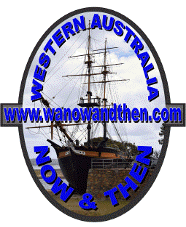DESCRIPTION
Nungarin is in the central wheatbelt on the road from Merredin to Trayning.
Located away from the main tourist trails, Nungarin is one of the hidden gems of the wheatbelt.
Around the town are a number of natural features that are worth visiting including Eaglestone Rock, Mangowine Homestead, McCorry's Old Hotel and Lake Campion to name just a few.
In town there are markets are held on the first Sunday of each month and one of the best rural museums in the state.
The town never really saw a period of rapid development. It remains today a sleepy backwater doing little more than it has done for the past 100 years. Because it is away from more travelled routes, it has retained all its outback country charm.
During World War II a large army vehicle workshop and store was constructed in town. It was the largest such facility in the state at the time. The workshop now houses the military museum.
The Heritage Machinery and Army Museum has one of the most impressive collections of military equipment and farm machinery in the state.
During World War Two a large army installation was constructed at Nungarin. It was thought that a base far from the coast would be safe from bombing raids by the Japanese.
Most of the complex is now gone but the saw toothed workshop building remains as a reminder of how important some small country towns became to the defence of Australia.
For some reason few people seem to know about the museum or the impressive collection inside. It is a real pity because it deserves to be one of the state's most important tourist attractions.
The museum, like many others in country towns, depends on volunteers and a special mention needs to be made of Bill Hewitt who put many years of dedicated effort into the museum including helping to bring and old American Grant tank back to full working order.
Sadly the tank was sold in order to raise much needed funds for the museum.
Although Bill is no longer with us, his hard work and long standing connection with the museum will always be remembered.
It is thought that the main museum building is the largest timer clad building in the southern hemisphere.
Work at the museum is a never ending project and in 2022 a $120,000 grant was provided by Lotterywest to help the museum add another building to help protect the growing number of items to be exhibited.
Fund raising events at the museum include campfire dinners and big Sunday breakfasts so if you are in the area, it is worth checking to see what is on.
Tour groups visiting the museum can book ahead for lunches that are catered by the museum cafe.
HISTORY
Exploration of the area began with J.S. Roe in 1836 but settlement was slow in coming.
It was during C.C. Hunt's expedition in 1864 that the first mention of Noongarin Rock is made.
The name comes from the Aboriginal language and probably refers to Nungarin Rock which is a main vantage point for the surrounding countryside.
The Adams were the first family to settle here in the 1870s and their homestead at Mangowine, still stands about 16km north of town. Apart from the occasional passing prospector, the Adams family lived in virtual isolation until new settlers began to arrive in 1909.
The name Mangowine appears to be the concatenation of two English words 'mango' and 'wine' but in fact it is believed to originate from an Aboriginal word. The homestead was restored and is now the venue for annual events like the Mangowine festival.
There is a campsite at Mangowine for those who would like to stay overnight.
Grazing was the main industry in the area until about 1909 when the first wheat growing was started. This was to rapidly take over and become the focus of the shire.
In 1911 the railway reached the town and the townsite was finally gazetted in 1912.
A mining operation was started at Chandler to supply potash as fertilizer during World War II but this was quickly abandoned once the war ended and cheaper sources were available from overseas.
TALL TALES AND TRUE
No information for this section yet. If you know of something we can add here please contact us and let us know.
VIDEO
PROBLEM PLAYING THESE ON FIREFOX?
Turn off Enhanced Tracking Protection
Click the shield icon left of the URL near the top left
Slide Advanced Tracking Protection to OFF
Check out our other VIDEOS
NEW **** CLICKABLE VIDEO MAPS **** NEW
Check out our other VIDEOS
NEW **** CLICKABLE VIDEO MAPS **** NEW
OTHER INFORMATION
ATTRACTIONS
Mangowine Homestead, Museum,
Eaglestone Rock,
McCorry's Old Hotel, Lake Campion, Talgomine Rock, Danberrin Rock.
BUILDINGS OF NOTE
Mangowine Homestead c1870, Hotel 1828, McCorry's Old Hotel, Military workshop (museum).
FAMOUS SONS AND DAUGHTERS
ELECTORAL ZONES
State : Central Wheatbelt
Federal : Durack
OTHER INFO.
Postcode : 6490
Local Government : Shire of Nungarin
PHOTOS
Sadly something has disabled these photo sections on our website.
We don't know what it is or how to fix it.
Aplolgies for the inconvenience. We will work on finding a way round it.
.









